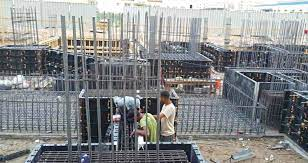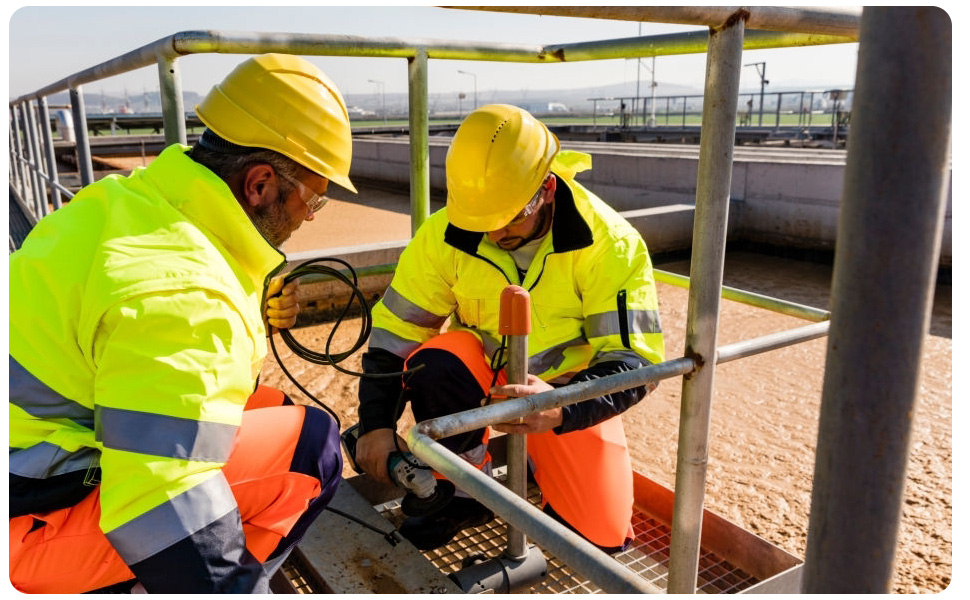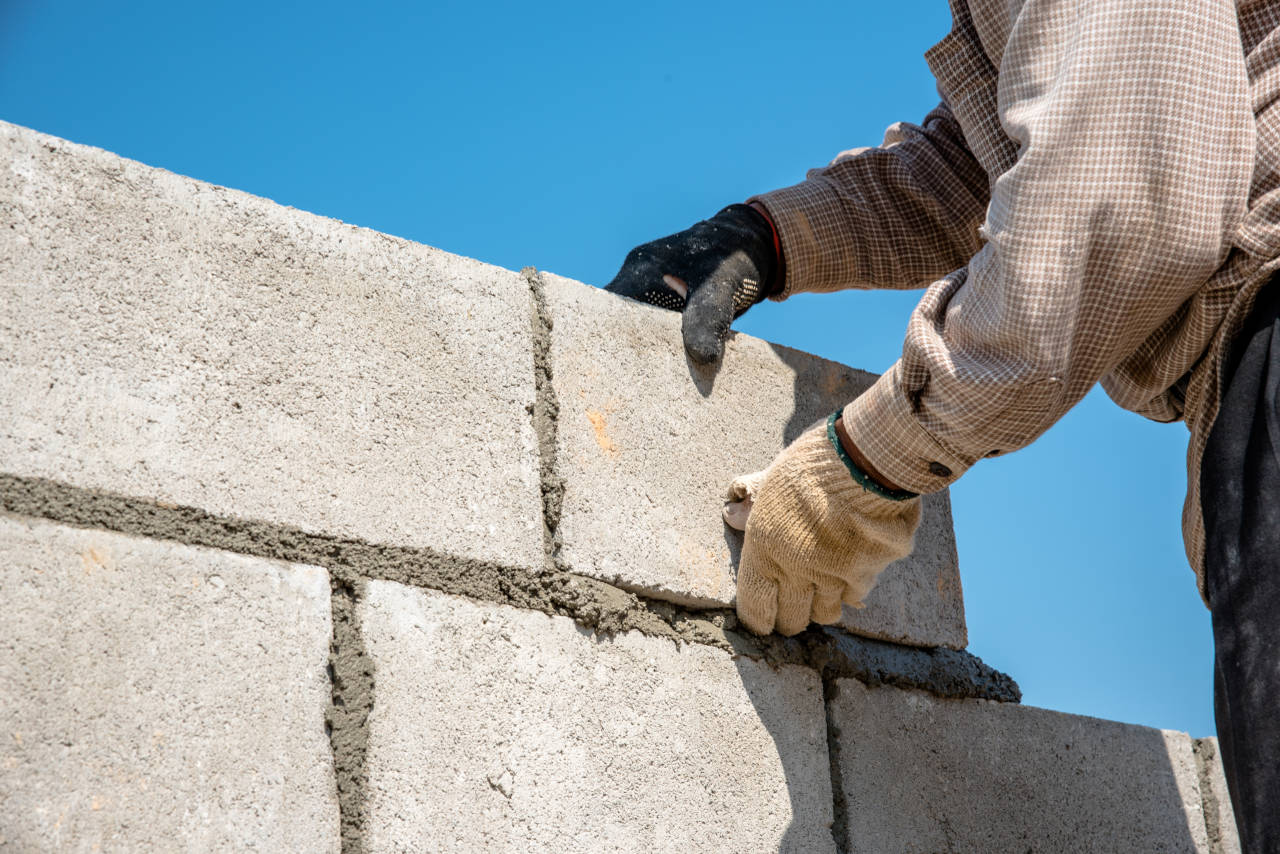Chargehand Shuttering Carpenter (Elective: System Formwork/ Conventional Formwork)(6 month course)
Chargehand Shuttering Carpenter (Elective: System Formwork/ Conventional Formwork) click here
Brief Job Description
Chargehand shuttering carpenter is responsible for assembling and dismantling formwork for complex and critical works including staircase, landing, ramps, inclined structures, curved or circular structures,
mounds/frames for Pre-cast segments, form finished R.C.C structures and jump form system and
conventional shuttering.

Personal Attributes
The chargehand shuttering carpenter is expected to be physically fit to work across various locations with
varied environmental conditions. The person should be organized, diligent, methodical, safety-conscious,
and a prompt decision-maker. In addition to being a team player, the individual should have good
communication skills.
Work effectively in a team to deliver desired results at the workplace
Description
This unit describes the skills and knowledge required to work effectively within a team to achieve the
desired results
Scope
The scope covers the following :
Interact and communicate in an effective manner
Support co-workers to execute the project requirements
Practice inclusion
Elements and Performance Criteria
Interact and communicate in an effective manner
To be competent, the user/individual on the job must be able to:
PC1. pass on work related information/ requirement clearly to the team members
PC2. inform co-workers and superiors about any kind of deviations from work
PC3. report any unresolved problem to the supervisor immediately
PC4. obtain instructions from superiors and respond on the same
PC5. communicate to team members/subordinates for appropriate work technique and method
PC6. seek clarification and advice as per the requirement
Support co-workers to execute the project requirements
To be competent, the user/individual on the job must be able to:
PC7. hand over the required material, tools, tackles, equipment and work fronts timely to
interfacing teams
PC8. work together with co-workers in a synchronized manner
Practice inclusion
To be competent, the user/individual on the job must be able to:
PC9. maintain cultural inclusivity at work place
PC10. maintain disability friendly work practices
PC11. follow gender neutral practices at workplace
PC12. address discriminatory and offensive behavior in a professional manner as per
organizational policy
Knowledge and Understanding (KU)
The individual on the job needs to know and understand:
KU1. own roles and responsibilities
KU2. importance of effective communication
KU3. the consequence of poor teamwork on project outcomes, timelines, safety at the
construction site, etc.

KU4. different modes of communication used at workplace
KU5. importance of creating healthy and cooperative work environment among the gangs of
workers
KU6. different activities within the work area where interaction with other workers is required
KU7. applicable techniques of work, properties of materials used, tools and tackles used, safety
standards that co-workers might need as per the requirement
KU8. importance of proper and effective communication and the expected adverse effects in case
of failure relating to quality, timeliness, safety, risks at the construction project site
KU9. importance and need of supporting co-workers facing problems for the smooth functioning of
work
KU10. the fundamental concept of gender equality
KU11. how to recognize and be sensitive to issues of disability, culture and gender
KU12. legislation, policies, and procedures relating to gender sensitivity and cultural diversity
including their impact on the area of operation
Generic Skills (GS)
User/individual on the job needs to know how to:
GS1. write in at least one language, preferably in the local language of the site
GS2. read the communication regarding work completion, materials used, tools and tackles used,
the resource required, etc,
GS3. speak in one or more languages, preferably in one of the local language of the site
GS4. listen and follow instructions / communication shared by superiors/ co-workers regarding
team requirements or interfaces during work processes
GS5. communicate orally and effectively with co-workers considering their educational and social
background
GS6. decide on what information is to be shared with co-workers within the team or to the
interfacing gang of workers
GS7. plan work and organize the required resources in coordination with team members
GS8. complete all assigned task in coordination with team members
GS9. take initiative in resolving issues among co-workers or report the same to superiors
GS10. ensure best ways of coordination among team members
GS11. evaluate the complexity of task and determine if any guidance is required from superiors
Plan and organize work to meet expected outcomes
Description
This unit describes the knowledge and the skills required for an individual to plan and organize own work in morder to meet expected outcome
Scope
The scope covers the following :
Plan and prepare for work
Organize required resources as per work plan
Complete work as per the plan
Elements and Performance Criteria
Plan and prepare for work
To be competent, the user/individual on the job must be able to:
PC1. identify the targets and timelines set by superiors
PC2. determine the work requirements corresponding to
task(drawings/schedules/instructions/methodology), safety, tools and equipment prior to
commencement of task
PC3. plan the work by analyzing the required outcomes, work procedures, allotted time, resource
availability and known priorities
PC4. prepare the work areas in coordination with team members
PC5. plan for waste collection and disposal prior to and after completion of work
Organize required resources as per work plan
To be competent, the user/individual on the job must be able to:
PC6. arrange the required manpower prior to commencement of work
PC7. organize the required materials, tools and tackles required for the task
Complete work as per the plan
To be competent, the user/individual on the job must be able to:
PC8. engage allocated manpower in an appropriate manner
PC9. employ correct tools, tackles and equipment for the desired work
PC10. provide guidance to the subordinates to obtain desired outcome
PC11. use resources in an optimum manner to avoid any unnecessary wastage
PC12. use tools, tackles and equipment carefully to avoid damage
PC13. ensure the work processes adopted are in line with the specified standards and instructions
PC14. complete the work with the allocated resources within specified time
PC15. clean and organize the workplace after completion of task
Knowledge and Understanding (KU)
The individual on the job needs to know and understand:
KU1. importance of proper housekeeping including safe waste disposal
KU2. policies, procedures and work targets set by superiors
KU3. how to identify work activities that need to be planned and organized
KU4. how to determine the task requirements
KU5. how to determine the quality requirements related to the task
KU6. how to undertake all aspect of planning and organizing the task, including interpretation of
task, reading drawing/schedules, arranging resources, reporting problems etc.
KU7. how to implement the planned activities
KU8. how to use available resources in a judicious and appropriate manner to minimize wastages or
damage
Generic Skills (GS)
User/individual on the job needs to know how to:
GS1. write in one or more language, preferably the local language at the site
GS2. read communication from co-workers, superiors and notices from other departments as per
requirement of the level
GS3. speak in one or more language, preferably one of the local language at the site
GS4. follow communication shared by co-workers regarding standard work processes, resources
available, timelines, etc.
GS5. communicate effectively with co-workers and subordinates
GS6. decide on what sequence is to be adopted for execution of work
GS7. plan and organize the materials, tools, tackles and equipment required to execute the work
GS8. complete all assigned task with proper planning and organizing
GS9. analyze areas of work which could result in a delay of work, wastage of material or damage
to tools and tackles
GS10. evaluate potential solutions to minimize avoidable delays and wastages at the construction
site
Work according to personal health, safety and environment
protocols at construction site
Description
This NOS covers the skill and knowledge required for an individual to work according to personal health,
safety and environmental protocols at construction site
Scope
The scope covers the following :
Follow safety norms as defined by organization
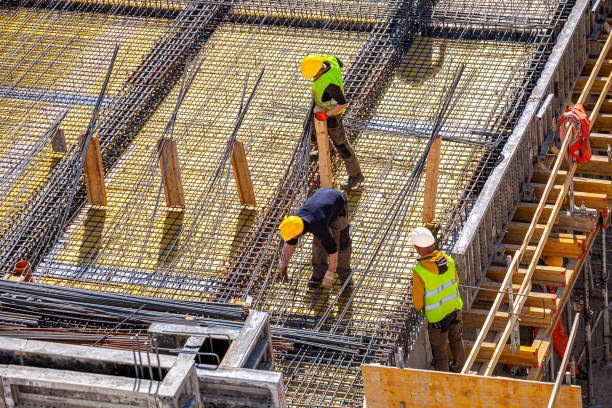
Adopt healthy & safe work practices
Implement good housekeeping and environment protection process and activities
Follow infection control guidelines as per applicability
Elements and Performance Criteria
Follow safety norms as defined by the organization
To be competent, the user/individual on the job must be able to:
PC1. identify and report any hazards, risks or breaches in site safety to the appropriate authority
PC2. follow emergency and evacuation procedures in case of accidents, fires, natural calamities
PC3. follow recommended safe practices in handling construction materials, including chemical
and hazardous material whenever applicable
PC4. follow all the protocols and safety techniques conveyed during safety awareness programs
like Tool Box Talks, safety demonstrations and mock drills conducted at the site
PC5. select and operate different types of fire extinguishers corresponding to various types of fires
as per EHS guideline
PC6. identify near miss, unsafe condition and unsafe act
Adopt healthy & safe work practices
To be competent, the user/individual on the job must be able to:
PC7. use appropriate Personal Protective Equipment (PPE) as per work requirements for : Head
Protection, Ear protection, Fall Protection ,Foot Protection, Face and Eye Protection, Hand
and Body Protection , and Respiratory Protection (if required)
PC8. handle all required tools, tackles, materials and equipment safely
PC9. follow safe disposal of waste, harmful and hazardous materials as per EHS guidelines
PC10. check and install all safety equipment as per standard guidelines
PC11. follow safety protocols and practices as laid down by site EHS department
PC12. obtain “height pass” clearance for working at heights
Implement good housekeeping practices
To be competent, the user/individual on the job must be able to:
PC13. collect, segregate and deposit construction waste into appropriate containers based on their
toxicity or hazardous nature
PC14. apply ergonomic principles wherever required
Follow infection control guidelines as per applicability
To be competent, the user/individual on the job must be able to:
PC15. follow recommended personal hygiene, workplace hygiene and sanitization practices
PC16. clean and disinfect all materials, tools and supplies before and after use
PC17. report immediately to concerned authorities regarding signs and symptoms of illness of self
and others
Knowledge and Understanding (KU)
The individual on the job needs to know and understand:
KU1. reporting procedures in cases of breaches or hazards for site safety, accidents, and
emergency situations as per guidelines
KU2. types of safety hazards at construction sites
KU3. basic ergonomic principles as per applicability
KU4. the procedure for responding to accidents and other emergencies at site
KU5. use of appropriate personal protective equipment based on various working conditions
KU6. importance of handling tools, equipment, and materials as per applicable norms
KU7. effect of construction material on health and environments as per applicability
KU8. various environmental protection methods as per applicability
KU9. storage of waste including non-combustible scrap material and debris, combustible scrap
material and debris, general construction waste and trash (non-toxic, non-hazardous), any
other hazardous wastes and any other flammable wastes at the appropriate location
KU10. how to keep the workplace neat and tidy so as to be safe
KU11. how to use hazardous material in a safe and appropriate manner as per applicability
KU12. types of fire
KU13. procedure of operating different types of fire extinguishers
KU14. safety relevant to tools, tackles, and equipment as per applicability
KU15. housekeeping activities relevant to task
KU16. ways of transmission of infection
KU17. ways to manage infectious risks at the workplace
KU18. different methods of cleaning, disinfection, sterilization, and sanitization
KU19. symptoms of infection like fever, cough, redness, swelling, and inflammation
Generic Skills (GS)
User/individual on the job needs to know how to:
GS1. write in at least one language, preferably in the local language of the site
GS2. fill safety formats for near miss, unsafe conditions and safety suggestions
GS3. read in one or more language, preferably in the local language of the site
GS4. speak in one or more language, preferably in one of the local language of the site
GS5. listen to instructions/communication shared by site EHS and superiors regarding site safety,
and conducting the toolbox talk
GS6. identify potential safety risks and report to the appropriate authority
GS7. assess and analyze areas which may affect health, safety and environment protocol on the
site
Assemble and dismantle system formwork for complex RCC structure
Description
This unit describes the skills and knowledge required to assemble and dismantle system formwork for
complex RCC structure.
Scope
The scope covers the following :
Assemble system formwork for complex RCC structures (Staircase, landing, ramps, inclined
structures, curved or circular structures)
Dismantle system formwork for complex RCC structures
Elements and Performance Criteria
Assemble system formwork for complex RCC structures (Staircase, landing, ramps, inclined structures,
curved or circular structures)

To be competent, the user/individual on the job must be able to:
PC1. interpret the drawings, schedules, and work method statements
PC2. check that different types of plywood and timbers are compliant with the required
specifications
PC3. check the availability of all the required tools, materials, and components
PC4. check for the completion of the preparatory works such as marking, staging, etc.
PC5. check the availability of the required fixings and fasteners based on the system formwork
used
PC6. set up formwork manually or mechanically as per instructions/ specification
PC7. check that profile of the shutter panels is as per the required shape of the structure
PC8. use appropriate methods/ tools such as water level pipe, dumpy level, auto level or laser
levelling machine for levelling of the formwork
PC9. provide the necessary support to the formwork using props or other appropriate components
based on the type of system used
PC10. plug all openings and gaps using foam sheet and adhesive tape or other appropriate
materials
PC11. check working platform for safety
PC12. check that the erected formwork’s line, level, and alignment are within the tolerance limits
PC13. check the dimensional accuracy and right angle for the shutters and take corrective
measures as per requirement
PC14. obtain approval from the seniors upon checking and verification of the completed shuttering
works and take suggested corrective actions as per requirement
Dismantle system formwork for complex RCC structures
To be competent, the user/individual on the job must be able to:
PC15. follow dismantling procedure /standard practice as per system used
PC16. dismantle system formwork ensuring stripping time as per IS (Indian standard)/international
code for different types of structures
PC17. remove bracing and all other support sequentially and safely as instructed
PC18. remove sheathing material sequentially using proper tools and tackles to avoid damage to
structure or sheathing materials
PC19. remove formwork shutters manually or by mechanical means as per requirement, basis
shutter size
PC20. ensure that all the small components are staked properly for further use
PC21. replace/repair formwork material if required and ensure cleaning and proper staking after
dismantling
Knowledge and Understanding (KU)
The individual on the job needs to know and understand:
KU1. standard procedures for shuttering and formwork for in situ and pre cast construction
KU2. safety rules and regulation for handling and storing relevant carpentry tools, equipment and
materials
KU3. importance of personal protection including the use of relevant safety gears & equipment
KU4. service request procedures for tools, materials and equipment
KU5. procedure for layout of formwork as per drawing for complex structure such as staircase,
landing, ramps, inclined structures, curved or circular structures)
KU6. how to read plan, elevation and sectional drawing relevant to task
KU7. basic principles of measurement, conversion of units , basic geometric and arithmetic
calculation
KU8. different types of measurements and marking tools
KU9. how to select and use different types of formwork tools
KU10. standard size of all formwork tools, material and components
KU11. use of water level tube
KU12. major types of system formwork and their appropriate applications
KU13. how to erect and brace major types of formwork as per site requirements
KU14. properties and application of release agents
KU15. standard tolerance of shuttering works
KU16. checklist for shuttering work
KU17. how to check for line, level and alignment requirement
KU18. preventive and corrective action to ensure formwork meets the required standard of quality
KU19. manufacturer’s specification/ instructions for erecting and dismantling formwork
KU20. how to physically/ visually check for level, compaction of ground surface
KU21. use of tools and equipment required in earthworks
KU22. standard practices for housekeeping sequence and prioritizing of activities
KU23. basics of reinforcement work
KU24. basics of concreting works
KU25. basics of scaffolding works
Generic Skills (GS)
User/individual on the job needs to know how to:
GS1. write in one or more language, preferably in the local language of the site
GS2. read sketches, instructions provided for the work, and various signboards, safety rules,
safety tags, exit route information in one or more languages, preferably in the local language
of the site
GS3. speak in one or more language, preferably one of the local language at the site
GS4. communicate orally and effectively with team members
GS5. analyze the safety aspect of the workplace
GS6. plan work and organize required resource effectively
GS7. complete work as per agreed time schedule and quality parameters
GS8. resolve any conflict within the teammates
GS9. evaluate the complexity of the tasks
GS10. identify any violation of safety norms during the work
Assemble and dismantle system formwork for pre-cast
segments and form finished R.C.C structures
Description
This unit describes the skills and knowledge required to assemble and dismantle system formwork for precast segments and form finished R.C.C structures.
Scope
The scope covers the following :
Assemble and dismantle moulds/frames for pre-cast segments
Assemble and dismantle system formwork for form finished structures
Elements and Performance Criteria
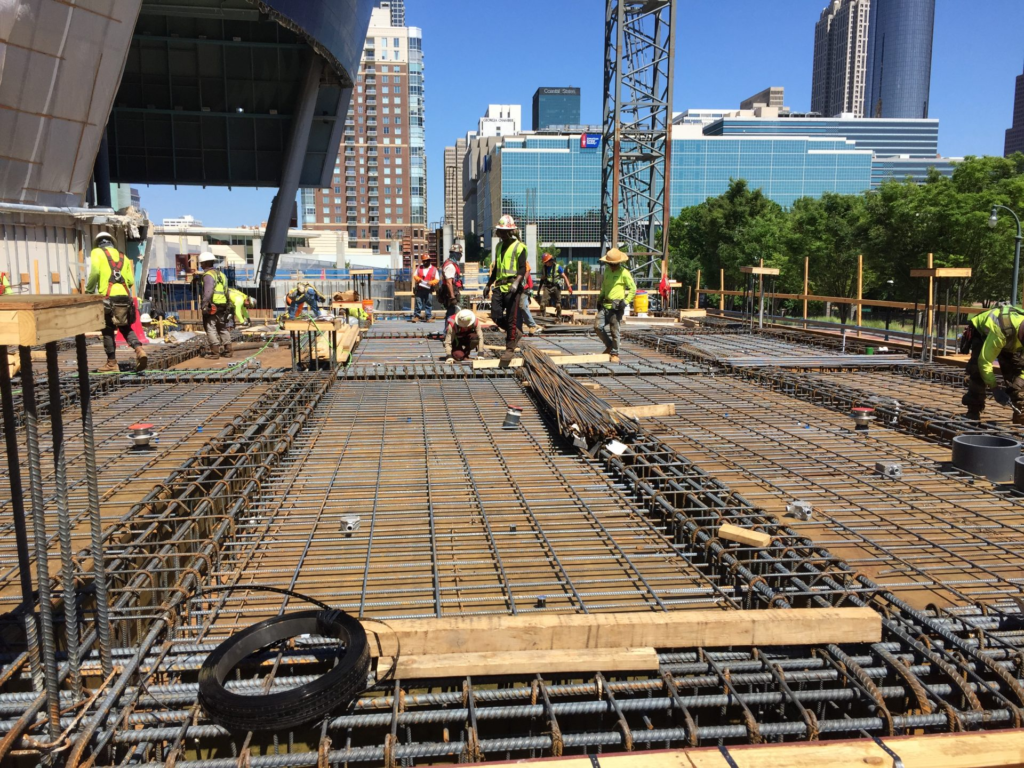
Assemble and dismantle moulds/frames for pre-cast segments
To be competent, the user/individual on the job must be able to:
PC1. read assembly drawings and work method statements
PC2. interpret sketches related to fixing sequence and method for assembling moulds and frames
PC3. check the availability of materials, tools, details and method statement before assembling
moulds or frames for pre-cast work
PC4. position, assemble, prop and secure shutter panels as per approved workshop drawing and
profile requirement
PC5. apply release agent uniformly as per instructed method
PC6. fix all other accessories of external vibration for compacting concrete, if required
PC7. check for proper alignment and geometric accuracy of shutters
PC8. fix block out and cast-in-services as per marking and design requirement and check their
positions after fixing
PC9. check the assembly for rigidity
PC10. ensure joints are water tight by providing form sheets or necessary packing material
PC11. fix build-in components , void formers, box-outs and confirm their positions as per drawings
PC12. report to superior for completion and checking of shuttering and carry out suggested rework
PC13. dismantle moulds/frames sequentially
PC14. use proper tools and tackles to ensure structure or sheathing material is not damaged
Assemble and dismantle system formwork for form finished structures
To be competent, the user/individual on the job must be able to:
PC15. check the availability of all tools, materials, components as per requirement
PC16. check that forms are free from spillages, rust marks and stains
PC17. check that formwork panels are of same size and forms a regular pattern
PC18. check that holes left by formwork ties and components in concrete surfaces are in line
horizontally and vertically and form a regular pattern
PC19. check that chamfers are provided for all external angles of 90 degree
PC20. check that joints between formwork panels are tightly sealed with foamed rubber strips
PC21. ensure that gap between the panels is not greater than 1 mm and the sealing strips does not
protrude from the surface of the formwork panels
PC22. apply release agent uniformly as per instructed method or as per form finished requirement
PC23. position and set out formwork manually or by mechanical means as per instructions and
requirement
PC24. check that profiling of shutters panels conforms to the required shape of structure
PC25. position and provide necessary support using props or other appropriate components based
on system used
PC26. check for proper alignment and geometric accuracy of forms
PC27. fix build-in components, void formers and box-outs in positions as per drawings
PC28. check the assembly for rigidity and ensure joints between formwork panel, stop ends and
adjoining concrete are tight and do not permit grout loss
PC29. report to superior for completion and checking of shuttering and carry out suggested rework
PC30. dismantle moulds/frames sequentially
PC31. use proper tools and tackles to ensure structure or sheathing material is not damaged
Knowledge and Understanding (KU)
The individual on the job needs to know and understand:
KU1. standard procedures for shuttering and formwork for in situ and pre cast construction
KU2. safety rules and regulations for handling and storing relevant tools, equipment, and
materials required for relevant works in accordance with organizational norms
KU3. importance of personal protection including the use of related safety gears & equipment in
accordance with organizational norms
KU4. service request procedures for tools, materials and equipment
KU5. procedure for assembling and dismantling moulds/frames for precast structures
KU6. how to read plan, elevation and sectional drawing relevant to task
KU7. basic principles of measurement, conversion of units, basic geometric and arithmetic
calculation
KU8. use of different types of measurements and marking tools
KU9. standard size of all formwork tools, material and components
KU10. use of consumables
KU11. properties and application of release agents required for precast & form finished structures
KU12. how to use different types of hand tools for fixing moulds/frames and form finished shutters
KU13. importance of preventing grout loss caused by leakage
KU14. standard tolerance of shuttering works
KU15. checklist for shuttering work
KU16. how to check for line, level and alignment requirement
KU17. importance of finishing in case of form finish concrete
KU18. preparation of shutters for form finish concrete structure
KU19. types of material used for making shutters for form finished concrete
KU20. stripping time as per IS/International code
Generic Skills (GS)
User/individual on the job needs to know how to:
GS1. write in one or more language, preferably in the local language of the site
GS2. read sketches, instructions provided for the work, and various signboards, safety rules,
safety tags, exit route information in one or more languages, preferably in the local language
of the site
GS3. speak in one or more language, preferably one of the local language at the site
GS4. communicate orally and effectively with team members
GS5. analyze the safety aspect of the workplace
GS6. plan work and organize required resource effectively
GS7. complete work as per agreed time schedule and quality parameters
GS8. resolve any conflict within the teammates
GS9. evaluate the complexity of the tasks
GS10. identify any violation of safety norms during the work
Erect and dismantle jump form system
Description
This unit describes the skills and knowledge required to erect and dismantle jump form system
Scope
The scope covers the following :
Set out and assemble jump form system
De-shutter and jump/move the formwork system to the next level
Elements and Performance Criteria
Set out and assemble jump form system
To be competent, the user/individual on the job must be able to:
PC1. interpret assembling drawings and work method statement of the jump formwork system
PC2. check the availability of all tools, materials,and components as per requirement
PC3. check the starters/ fixing marks/ set out points for the installation of jump formwork system
as per the instruction of superior
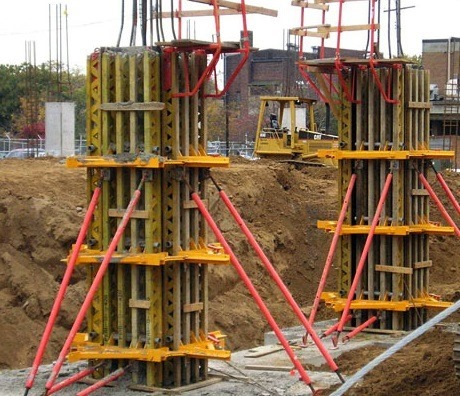
PC4. set out jump form system as per drawing
PC5. erect, fix, and align the shutters at the specified location as per structural drawing/ layout
PC6. install shear key as per manufacturer’s specification
PC7. fix platforms and assembly into core formworks as per manufacturer’s specification
PC8. install hydraulic system, power units and accessories as per manufacturer’s specifications
and standards, for lifting purpose
PC9. install penetration, block-out and cast-in services as per drawings
PC10. check that wall form shutter, working platform, lifting arrangement and other accessories are
installed as per manufacturer’s specifications
PC11. report to superiors for completion of work and checking of shuttering for their approval and
allowing concreting team for concrete casting
De-shutter and jump/move the formwork system to the next level
To be competent, the user/individual on the job must be able to:
PC12. carry out the de-shuttering and move the whole jump formwork setup to next level using
cranes or hydraulics
PC13. install the form shutters and other components as per the system of the jump formwork
PC14. install trailing screens and working platforms at required levels
PC15. dismantle jump form system after the concreting, at all required levels are completed, as per
manufacturer’s specifications and standard practices
Knowledge and Understanding (KU)
The individual on the job needs to know and understand:
KU1. standard procedure for erecting and dismantling jump form system
KU2. safety rules and regulations for handling and storing relevant tools, equipment, and
materials required for relevant works in accordance with organizational norms
KU3. importance of personal protection including the use of related safety gears & equipment in
accordance with organizational norms
KU4. service request procedures for tools, materials and equipment
KU5. types of Jump form system/ specialized formwork system such as slip form, jump form
system
KU6. schematic installation & working drawing
KU7. preparatory works for installation of Jump form system
KU8. profiling of formwork as per required shape of structure
KU9. how to check plumb and take corrective action
KU10. use of fixtures, connection
KU11. use of tools, tackles, components & equipment for installation of Jump form system
KU12. use of anchor cones, ties, sleeves
KU13. manufacturers instructions/specification for Jump form system
KU14. preventive and corrective action to ensure formwork meets the required standards of quality
KU15. types and application of advance formwork system and their applications for basic and
complex structures
KU16. types of cranes and hydraulic jacks used for lifting of Jump form system
KU17. basics of reinforcement works
KU18. basics of concreting works
KU19. weight of different components, assembled panels
Generic Skills (GS)
User/individual on the job needs to know how to:
GS1. write in one or more language, preferably in the local language of the site
GS2. read sketches, instructions provided for the work, and various signboards, safety rules,
safety tags, exit route information in one or more languages, preferably in the local language
of the site
GS3. speak in one or more language, preferably one of the local language at the site
GS4. communicate orally and effectively with team members
GS5. analyze the safety aspect of the workplace
GS6. plan work and organize required resource effectively
GS7. complete work as per agreed time schedule and quality parameters
GS8. resolve any conflict within the teammates
GS9. evaluate the complexity of the tasks
GS10. identify any violation of safety norms during the work
Erect and dismantle conventional formwork for heavy civil
construction works
Description
This unit describes the skills and knowledge required to erect and dismantle conventional formwork for
heavy civil construction works
Scope
The scope covers the following :
Erect staging using steel trestles
Carry out shuttering work using steel beams, channel sections/ truss and steel shuttering sheets
Dismantle formwork in a safe manner
Elements and Performance Criteria
Erect staging using steel trestles
To be competent, the user/individual on the job must be able to:
PC1. interpret drawings, schedule, and work method statements
PC2. ensure all tools, materials, components are available as per requirements
PC3. identify different types of plywood and timber with their specifications and suitable checks
PC4. check to ensure that all preparatory works prior to staging erection such as marking, staging
are completed
PC5. check that fixing & fasteners are available as per requirement and are fit for use
PC6. prepare RCC base/ check base and bolting for erection of trestles
PC7. check and confirm suitability/stability of the foundation/structure on which the staging is to
be erected
PC8. place, position and fix trestle at marked location manually/mechanically as per
drawings/working instructions
PC9. fix trestle at marked location by providing suitable bolting
PC10. check plumb for first level of erection of trestles
PC11. place and fix trestle as per marking and fixing method as provided in drawing and provide
necessary support
PC12. provide horizontal and diagonal bracing by welding or bolting with steel section or any other
suitable method as instructed
PC13. check for line, level and alignment and support of erected staging
Carry out shuttering work using steel beams, channel sections/ truss and steel shuttering sheets
To be competent, the user/individual on the job must be able to:
PC14. place and position steel beam/channel section/ truss as Primary beam for shuttering with the
help of crane and fix by tack welding or by bolting
PC15. place and position steel beam/channel section/ truss as secondary beam for shuttering with
the help of crane and fix by tack welding or by bolting
PC16. place and fix steel shuttering sheets/ sheeting material as per drawing and working
instructions
PC17. check for line, level and alignment and support of staging and shuttering
PC18. check for dimensional accuracy of shuttering works
PC19. complete work within the allocated time , with quality and safety
PC20. report to superior for completion and checking of shuttering and carry out suggested rework
Dismantle formwork in a safe manner
To be competent, the user/individual on the job must be able to:
PC21. follow dismantling procedure as per working instructions and standard practices
PC22. dismantle trestle staging ensuring stripping time as per IS/International code for different
types of structures and as per applicability
PC23. remove wedge from bottom of shuttering sheets
PC24. remove shuttering sheets, channel sections, steel beams, steel truss and other support
sequentially and safely as per working instructions
PC25. lower down shuttering materials manually/ mechanically with the help of crane as per
applicability
PC26. dismantle trestle staging by cutting tack welding/unscrewing bolts and nuts
PC27. ensure that all the small components are stacked properly for further use
PC28. replace damaged material and components if required and ensure cleaning and proper
stacking after dismantling
Knowledge and Understanding (KU)
The individual on the job needs to know and understand:
KU1. standard procedures for shuttering and formwork for in-situ and pre-cast construction
KU2. safety rules and regulation for handling and storing relevant carpentry tools, equipment and
materials
KU3. importance of personal protection including the use of relevant safety gears and equipment
KU4. service request procedures for tools, materials and equipment as per organizational norms
KU5. how to follow proper sequence for dismantling and stacking of form work materials
KU6. how to provide facilities like IPs, hooks in the permanent structures for lowering staging and
shuttering materials
KU7. how to barricade the area properly while carrying out the dismantling operation
KU8. adequate safety measures for fire protection while cutting the material and also while
working in restricted location
KU9. how to use standard tools and tackles for carrying out the dismantling operation
KU10. procedure for layout of formwork as per drawing for heavy civil construction works
KU11. how to read plan, elevation and sectional drawing relevant to task
KU12. basic principles of measurement, conversion of units , basic geometric and arithmetic
calculation
KU13. different types of measurements and marking tools
KU14. how to select and use different types of formwork tools
KU15. standard size of all formwork tools, material and components
KU16. use of water level tube
KU17. how to erect and brace steel trestles
KU18. procedure for tack welding and bolting
KU19. properties and application of release agents
KU20. standard tolerance of shuttering works
KU21. checklist for shuttering work
KU22. how to check for line, level and alignment requirement
KU23. preventive and corrective action to ensure formwork meets the required standards of quality
KU24. how to physically/ visually check for level, compaction of ground surface
KU25. basics of reinforcement work
KU26. basics of concreting works
KU27. basics of scaffolding works
Generic Skills (GS)
User/individual on the job needs to know how to:
GS1. write in one or more language, preferably in the local language of the site
GS2. read sketches, instructions provided for the work, and various signboards, safety rules,
safety tags, exit route information in one or more languages, preferably in the local language
of the site
GS3. speak in one or more language, preferably one of the local language at the site
GS4. communicate orally and effectively with team members
GS5. analyze the safety aspect of the workplace
GS6. plan work and organize required resource effectively
GS7. complete work as per agreed time schedule and quality parameters
GS8. resolve any conflict within the teammates
GS9. evaluate the complexity of the tasks
GS10. identify any violation of safety norms during the work
